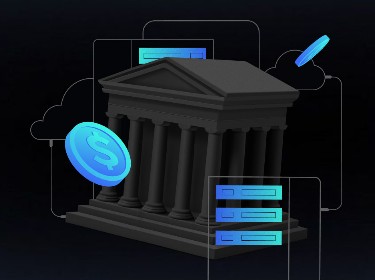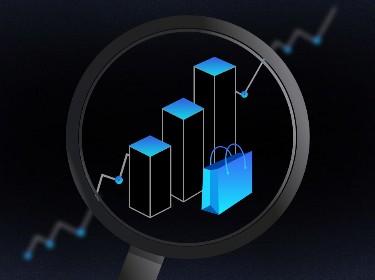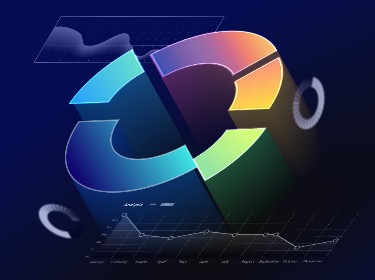Earning your customers' trust and loyalty can be seen as a key determinant of your business's success. However, while attracting new customers is important, retaining them and preventing customer churn holds even greater significance for long-term sustainability.
Customer churn is a well-known challenge for many businesses, and combating it demands strategic intelligence.
Fortunately, advances in machine learning and big data have led to the development of sophisticated customer churn prediction software. This technology offers deep insights and predictive capabilities to identify customers at risk of churning, thereby effectively addressing this issue.
Read on to find out about the fundamentals of customer churn prediction software, understand how it enables businesses to remain competitive, and explore our comprehensive guide to creating a robust churn prediction system.
Discover how PixelPlex’s predictive analytics services and solutions can help your business gain a competitive edge
What is customer churn prediction software?
Customer churn prediction software is a solution designed to identify the likelihood of customers discontinuing their use of a service or product. It operates by analyzing customer data to identify trends and patterns that typically precede churn.
Customer churn prediction software acts as an early warning system for businesses. By predicting who might leave, a company can take steps to keep them, which is good for customer relationships and is considered to be financially smart since it costs less to keep a customer than to find a new one.
Besides, churn prediction helps businesses focus on enhancing their offerings for existing customers and making sure that they do not feel the need to look elsewhere for better services or goods.
Why develop customer churn prediction software?
By developing customer churn prediction software, a company can gain a competitive advantage in a crowded market. This software showcases a business’s expertise in leveraging advanced analytics and demonstrates a commitment to addressing one of the most pressing challenges in the business world — customer retention.
The introduction of churn prediction software can also create new revenue streams. Licensing this technology to other businesses or offering it as a service can diversify income sources and contribute to the financial stability and growth potential of a company. This move can also open doors to cross-selling additional services or products, thus further expanding a business’s market reach.
How does customer churn prediction software work?
Customer churn prediction software normally involves the following key steps to predict customer churn:
- Data collection assembles relevant customer data from various business interactions and systems.
- Data cleaning refines the data by correcting inaccuracies and ensuring consistency.
- Feature engineering identifies important variables that are likely indicators of churn.
- Analysis method selection chooses a suitable analysis technique, which could range from basic statistical analysis to advanced predictive analytics.
- The analysis phase applies the selected technique to understand customer behavior and identify potential churn signals.
- Evaluation measures the effectiveness of the analysis in identifying potential churn by using metrics that could include historical comparisons and trend analysis.
- Optimization adjusts the analysis approach to improve the identification of churn indicators.
- Deployment puts the churn prediction process into action within the business’s operational strategy.
- Monitoring oversees the ongoing performance of the churn prediction, ensuring it stays relevant.
- Updating regularly refreshes the approach with new data and insights to maintain accuracy.
From strategic guidance to patent support — our research and development services are tailored to propel your innovations from concept to market leader
What problems does churn prediction software solve?
![]()
Churn prediction software can help address a wide range of pressing business problems and empower organizations to become more resilient.
Let’s take a closer look at some of them.
High attrition rates
A large number of businesses from different industries face the challenge of rapid customer loss. Churn prediction software addresses this by early identification of risk factors and implementing proactive strategies to decrease turnover.
Inefficient use of marketing budget
Companies without a focused approach to customer retention may end up wasting their marketing budgets on launching ineffective campaigns instead of targeted interventions for at-risk customers. However, this problem can be mitigated as churn prediction software facilitates the strategic allocation of marketing and customer service resources to where they are most needed.
Loss of profitable customers
Failing to identify which customers are most profitable and at risk of leaving can lead to unintentionally overlooking those who quietly contribute significantly to a company’s revenue. Churn prediction software effectively battles this challenge by spotting these valuable customers, aiding in their retention, and thereby safeguarding the business’s financial well-being.
Inability to offer personalized customer experience
Businesses also frequently encounter the issue of not providing personalized engagement, which can result in customer dissatisfaction and eventual disengagement. Churn prediction software, however, enables companies to analyze customer data and tailor interactions, which helps communication strike a chord with each customer and bolsters the loyalty of the entire customer base.
Product and service stagnation
Customer churn prediction software is capable of addressing the challenge of opaque customer departure motives. It equips businesses with the analytical capability to decode the patterns and triggers of customer dissatisfaction, which is crucial for the iterative development of products and services that align more closely with customer expectations and market demands.
Potential market vulnerability
A business that overlooks the warning signs of customer dissatisfaction risks losing ground to competitors. However, by strategically deploying churn prediction software for churn analytics, a company can identify and proactively engage at-risk customers, which can be viewed as a crucial step in defending its place in the market hierarchy.
What metrics does customer churn prediction software help monitor?
Customer churn prediction software typically monitors a wide range of metrics and indicators that signal the health of customer relationships and predict potential churn, which are crucial for business success.
Some of the most significant include:
- The attrition ratio quantifies the proportion of customers that end their relationship with a company over a certain period, which acts as a direct measure of customer loss.
- Customer lifetime value estimates the total profit a company can expect from a customer throughout their business relationship, informing how much to invest in retaining them.
- Loyalty indices reflect customer satisfaction and the likelihood they will recommend the company, based on feedback from various customer satisfaction surveys.
- Utilization frequency tracks how regularly a customer uses a product or service, which can indicate their reliance on it and potential churn if usage decreases.
- The average revenue per user represents the average income a company generates from each user, highlighting trends in revenue changes per customer.
- Consumption dynamics, also known as purchase patterns, describes the changing patterns in how often and how much a customer buys, which can signal shifts in customer satisfaction.
- Service interaction trends track the volume and nature of customer interactions with support services, often serving as a predictor of churn when there is an increase in unresolved issues.
- Participation metrics indicators measure how customers interact with marketing communications, with a decrease often signaling a loss of interest.
- Usage analytics data provides insights into how customers interact with a product’s features, indicating which aspects they value most and which are underused.
- A relationship vitality index is a composite metric that combines various customer data points to assess the overall health and potential longevity of the customer relationship.
- Subscription continuity rates measure how often customers renew their subscriptions, indicating their ongoing commitment to the service.
- Expansion success rates are responsible for identifying the effectiveness of a business in selling additional or upgraded services to its existing customers, indicating levels of customer satisfaction and engagement.
Check out how the PixelPlex team delivered this AI-powered intellectual property protection service for the web3 realm
Which technologies does modern customer churn prevention software use?
Modern customer churn prevention software employs a variety of technologies to identify at-risk customers and implement strategies to improve customer retention.
Some of the most widely used ones include data analytics and mining tools, artificial intelligence and machine learning solutions development, automation, social monitoring, and subscription management tools, as well as predictive modeling and behavioral analytics.
Data analytics and mining tools
Churn prediction platforms make use of advanced data analytics services and tools to interrogate and interpret vast customer datasets. These systems rely on classification algorithms, regression analyses, and clustering techniques to predict churn by analyzing behavioral data across transactional histories, customer service interactions, and other activities.
Artificial intelligence and machine learning
The most powerful and avante-garde churn prevention platforms are commonly underpinned by a fusion of machine learning and artificial intelligence solutions to form a proactive barrier against customer attrition.
Algorithms such as random forest and support vector machines mine historical data and sharpen their predictive accuracy over time to forewarn potential churn.
Simultaneously, the subtleties of customer sentiment can be decoded through natural language processing and sentiment analysis, which grants companies the foresight to address concerns before they escalate.
Automation, social monitoring, and subscription management tools
Automation, chatbots, social media monitoring, and subscription management tools play a huge role in customer churn prediction software.
Automation and AI-powered chatbot solutions deliver instant support, swiftly address customer concerns, and diminish the risk of churn prompted by service disruptions.
Social media monitoring tools vigilantly track brand mentions and sentiment and provide early warnings of churn risks.
For subscription-based models, specialized tools offer nuanced control over subscription options, with features that allow customers to pause, resume, and modify billing cycles, thereby curtailing the incidence of subscription cancellations.
Predictive modeling and behavioral analytics
Churn prediction software is also reliant on predictive modeling to anticipate when customers might consider leaving, based on statistical inference from historical data. It simultaneously employs behavioral analytics to map out customer engagement patterns and pinpoint critical junctures that may lead to churn. This helps forecast potential defections and empowers businesses to look into the causative factors of customer dissatisfaction, which therefore contributes to precise, data-driven responses to retain customers effectively.
Reach out to our big data consulting and engineering services to harness the power of analytics for more informed decision-making
How to build effective customer churn prediction models: PixelPlex’s 7-step guide
![]()
If you are eager to create your own churn prediction solution but are unsure where to start, our team has crafted a comprehensive guide detailing seven essential steps for developing a robust customer churn prediction model.
Step 1. Conduct a thorough analysis to understand the churn
First of all, you will need to conduct an in-depth analysis of historical data and thoroughly examine the patterns and trends among customers who have left. By doing so, you will be able to uncover the root causes of churn and pinpoint predictive indicators, which will serve as a foundation for the development of your predictive model and inform targeted retention strategies.
Step 2. Define specific objectives for your churn prediction software
Next, you and other decision-makers will have to define clear outcomes for the churn prediction software. This task requires establishing precise targets like a reduction in customer attrition, an increase in customer lifetime value, or improved efficiency of retention programs.
Plus, aligning these targets with key performance indicators will enable you to measure progress systematically and adjust strategies as needed for optimal results.
Step 3. Collect and prepare data
The data collection process should be comprehensive and encompass a wide array of variables known to impact customer retention. These are:
- Detailed customer demographics for insights into the customer base
- Complete transaction histories to reflect purchasing patterns and customer value
- Granular product usage statistics to reveal engagement levels
- Records of customer support interactions as indicators of satisfaction and service quality
Once collected, the data undergoes a rigorous preprocessing phase to ensure it is in a clear, analysis-ready format. This involves sophisticated algorithms to correct anomalies and standardize entries, providing temporal and categorical data alignment across various datasets.
Step 4. Implement the core features and functionalities
The subsequent step in building a churn prediction model involves carefully developing and implementing features that will be used for making predictions. The process should be predicated on selecting elements that have shown significance during the initial analysis and ensuring they are finely tuned to reflect the subtleties of customer behavior.
Step 5. Build and train the predictive model
During the creation of a predictive model for customer churn, your development team will be tasked with the selection of the most appropriate algorithm. The decision should be based on the characteristics of the dataset and the specific nuances of the churn issue at hand.
Decision trees, random forests, and support vector machines represent a spectrum of methodologies that can be employed, each with its own characteristics in terms of interpretability and predictive performance.
Training the model is an equally important step where historical data is utilized to identify and learn the patterns indicative of churn. This stage involves the adjustment of the model’s parameters to optimize its predictive accuracy against known outcomes.
For operational agility, the model’s predictive capabilities can be further augmented with business intelligence tools. These BI solutions facilitate the integration of real-time data analytics, which allows for the swift application of the model’s insights into current customer behaviors.
From consulting to full-cycle solution development — see how our business intelligence services can help transform your business
Step 6. Test the model on real users
In the model’s validation phase, it is tested against a live customer dataset to compare its performance with real-world outcomes.
During this step, your model’s churn predictions are to be rigorously evaluated against actual customer behaviors to verify predictive accuracy.
Software testing services ensure that this process is thorough and after this assessment, the system undergoes fine-tuning to enhance its precision and to guarantee that its forecasts accurately reflect real customer behavior patterns.
Step 7. Deploy and collect the feedback
After refining the model, deploy it within the operational business setting. Utilize the insights derived from the model to shape customer retention tactics.
At the same time, you can begin gathering feedback on the model’s performance and the success of implemented retention strategies. This information will be needed for continuous enhancement of the model to maintain its accuracy and effectiveness amidst evolving customer behaviors.
Closing thoughts
Customer churn prediction software is an integral tool for sustaining business growth and profitability and empowering companies to anticipate and address potential losses before they escalate. With the ability to analyze patterns and predict customer behavior, businesses can craft strategic interventions to retain their clientele effectively.
If you are determined to deliver your own custom churn prediction solution, reach out to our PixelPlex team for help. Our machine learning consulting services focus on delivering a solution that not only predicts churn but also provides actionable insights to enhance customer retention.
Connect with us now to explore how our proficiency can transform your customer retention strategy and fortify your market position.




